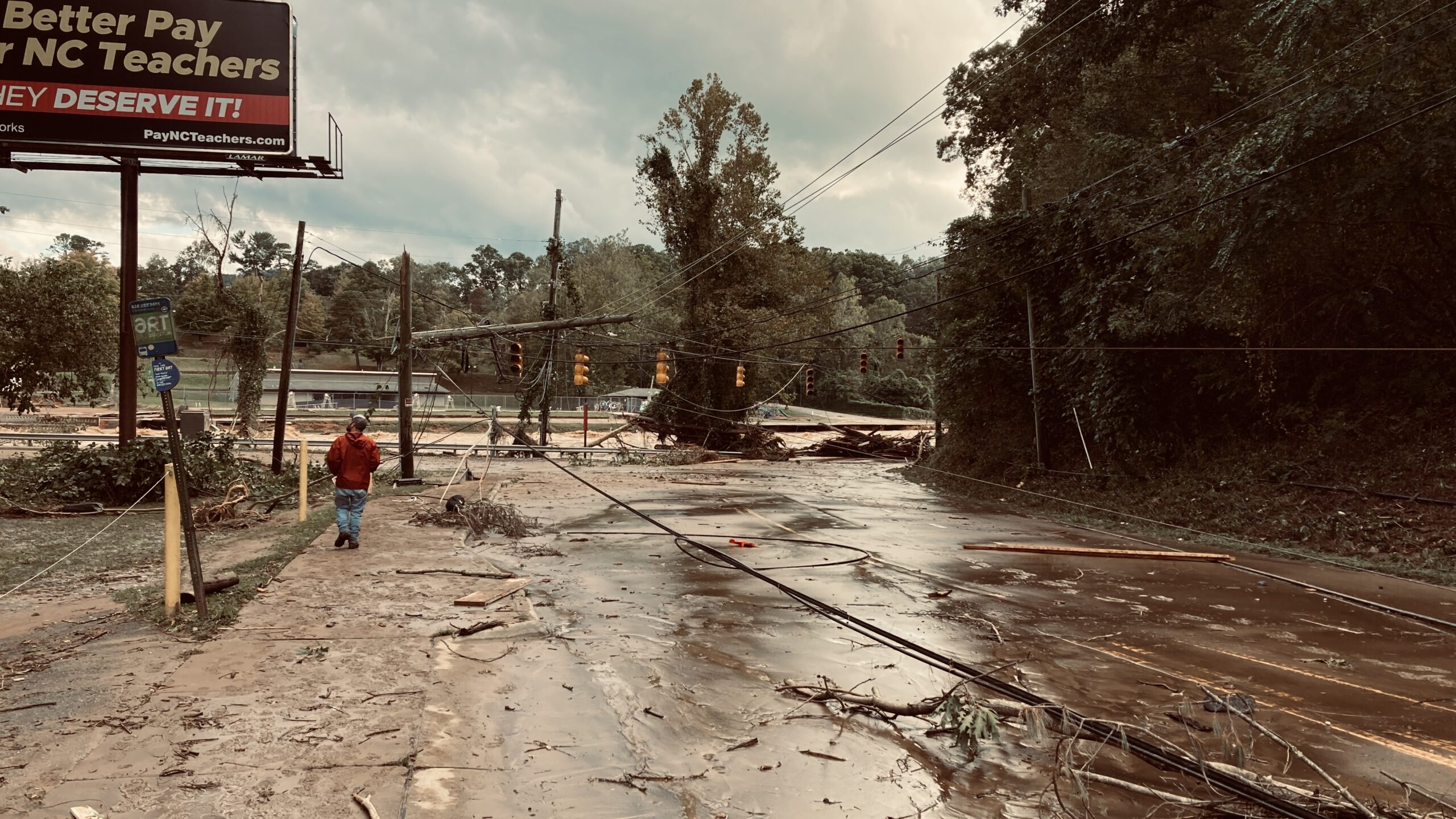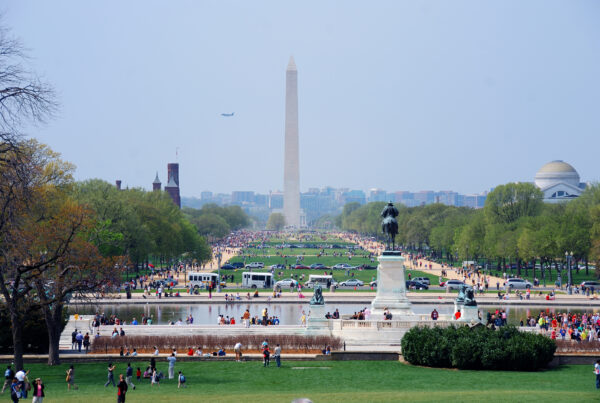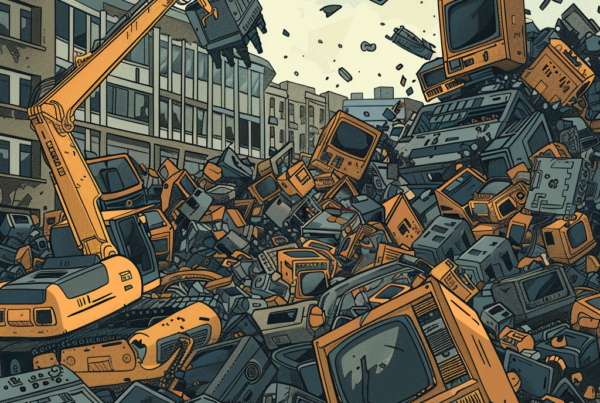As the death toll from Hurricane Helene and Hurricane Milton continues to climb, the stark reality of our changing climate is impossible to ignore. These back-to-back disasters underscore a brutal truth: the intensity and frequency of natural catastrophes are escalating, leaving destruction in their wake that goes far beyond physical damage.
In the aftermath of these storms, a hidden crisis emerges—one that threatens to leave millions disconnected and vulnerable. The digital divide, once considered merely an inconvenience, now stands as a critical factor in disaster resilience and recovery. As communities from the Carolinas to Florida brace for impact or struggle to rebuild, the ability to access vital information, connect with loved ones, and navigate relief efforts increasingly depends on digital access and literacy.
Make no mistake: this widening gap between the connected and the disconnected is now a matter of life and death.
Table of Contents
- Hurricanes and Other Natural Disasters are Deepening the Digital Divide
- Cascading Catastrophes in Climate-Vulnerable Areas
- How Digital Inclusion Organizations like Human-I-T are Building Disaster Resilient Communities
Hurricanes and Other Natural Disasters are Deepening the Digital Divide
The intensity and frequency of natural disasters have reached alarming levels in recent years, with far-reaching consequences that extend beyond immediate physical damage. Hurricane Ida’s rampage through Louisiana in 2021 left a staggering $55 billion worth of destruction in its wake, serving as a stark reminder of the immense economic toll these events can exact. Across the globe, the Australian bushfires of 2019-2020 painted a hellish landscape, while the 2015 Nepal earthquake and recent floods in Timor-Leste further underscore the global nature of this crisis.
But it’s not just the visible destruction that’s cause for concern. These disasters are exposing the fragility of our digital infrastructure—the very lifelines that keep us connected, informed, and safe in times of crisis. Hurricane Sandy’s assault on the eastern seaboard of the United States knocked out a quarter of all mobile phone towers, leaving millions without vital communication channels. The Caribbean islands faced an even more dire situation when Hurricanes Maria and Irma obliterated a staggering 90% of mobile sites, effectively cutting off entire communities from the outside world.
The vulnerability of our digital infrastructure extends beyond communication networks. Data centers, the beating hearts of our digital world, along with wireless and fixed infrastructure, face grave risks from a multitude of climate-related threats including hurricanes, storms, typhoons, extreme heat, and wildfires. This precarious situation is further compounded by the specter of power outages. During Hurricane Sandy, the loss of electricity forced numerous phone service providers offline, creating an information vacuum at a time when access to timely updates could mean the difference between life and death. Even in less dramatic scenarios, the insidious effects of climate change are felt—heatwaves silently sap the efficiency of power grids, increase transmission losses, and sometimes force entire power plants offline.
The repercussions of these infrastructure failures reverberate through every aspect of our lives, with healthcare access being particularly hard-hit. The Australian bushfires razed medical practices and pharmacies to the ground in affected regions. Those facilities fortunate enough to escape the flames often found themselves crippled by the loss of power and internet connectivity, severely hampering their ability to provide care when it was needed most. The challenges extend into the digital realm of healthcare as well. In Australia, a shocking 44% of all My Health Records—the nation’s electronic health record system—held no information about individuals seeking help in rural services outside their residence during the bushfires. This gaping hole in medical history severely impeded healthcare providers’ ability to ensure continuity of care for displaced individuals.
The dream of telemedicine as a solution to healthcare access in disaster scenarios has also faced harsh realities. In Nepal, in the aftermath of the 2015 earthquake, the implementation of digital health technologies was hampered by both limited access to the technologies themselves and by the local population’s ability to utilize them effectively. Similarly, flood response efforts in Timor-Leste were hindered by poor internet connections and coverage, underscoring the critical need for robust digital infrastructure and literacy.
As we delve deeper into this issue, a disturbing pattern emerges—the disproportionate impact on already vulnerable populations. Historically marginalized and underserved communities find themselves facing the greatest challenges when disasters strike. Low-income residents, those lacking insurance or with limited coverage, people with disabilities, the elderly, and immigrant populations are hit particularly hard by these calamities. The situation is even more precarious for undocumented residents, including families with mixed immigration status. Not only are they often ineligible for government aid or disaster relief, but many also live in constant fear of seeking help, trapped in a cruel limbo between disaster and deportation.
This brings us to the concept of “digital vulnerability,” a term recently introduced by the National Hazards Center at the University of Colorado. This phenomenon describes individuals who lack the digital capabilities to access online information about disaster risk, preparedness, and mitigation. The study found that residents in subsidized housing tend to be more vulnerable to disasters, partly due to their limited resources to address flooding risks. Crucially, these same residents are also more likely to experience one or more dimensions of the digital divide, creating a vicious cycle of vulnerability.
As climate change continues to reshape our world, the intersection of natural disasters and digital inequality presents an unprecedented challenge. The storms are getting stronger, the fires are burning hotter, and the floods are rising higher. But for those caught on the wrong side of the digital divide, these physical threats are amplified by a parallel crisis of disconnection, misinformation, and isolation. The question now is not simply how do we weather the storm, but how do we ensure that no one is left in the dark when it hits.
Cascading Catastrophes in Climate-Vulnerable Areas
As climate-fueled disasters intensify, the digital divide is transforming from an inconvenience into a matter of life and death. The consequences of this technological chasm are creating a domino effect that leaves vulnerable communities reeling long after the immediate crisis has passed.
At the heart of this issue lies a critical information gap. When disaster strikes, those on the wrong side of the digital divide find themselves cut off from crucial warnings and disaster-related information. It’s not just about missing a weather update or a news flash; it’s about being unaware of imminent danger, evacuation orders, or where to find emergency shelter and supplies. This information blackout extends beyond the immediate crisis, limiting access to media reports and online resources that are vital for recovery efforts. Recognizing the gravity of this situation, the Federal Emergency Management Agency (FEMA) has officially listed “access to technology” as one of the key societal factors affecting the severity of a disaster in a given community.
But the story doesn’t end with information access. In neighborhoods shaped by historical racism and insufficient infrastructure investment, residents face what researchers call “cascading risks.” Here, the digital divide doesn’t exist in isolation—it’s part of a larger tapestry of vulnerabilities that compound each other. Poor internet access intertwines with substandard housing, inadequate healthcare, and limited economic opportunities to create a perfect storm of disaster vulnerability. The long-term recovery issues in Louisiana’s Saint John Parish and Saint James Parish following Hurricane Ida paint a stark picture of this reality. Years after the hurricane, unrepaired roofs and massive levels of displacement still plague these communities, demonstrating how disasters can have enduring effects on areas with limited resources and digital connectivity.
The economic toll of these disasters is staggering, with the impacts reverberating through already struggling communities. While the $55 billion price tag of Hurricane Ida in Louisiana captures headlines, it fails to convey the disproportionate burden borne by those with the fewest resources to spare. For communities already grappling with limited infrastructure and economic challenges, each disaster pushes recovery further out of reach, creating a cycle of vulnerability that becomes increasingly difficult to break.
In the realm of healthcare, the consequences of the digital divide take on a particularly poignant dimension. The lack of comprehensive Electronic Health Records (EHR) for displaced individuals translates to disrupted treatments, potential medical errors, and added stress for patients already grappling with the trauma of disaster. Telemedicine, often touted as a solution for healthcare access in crisis situations, falls short when faced with the realities of poor internet connections and limited digital literacy in affected areas.
This brings us to a critical, often overlooked aspect of the digital divide: the skills gap. A recent study revealed that only 35.5% of respondents felt confident in their ability to find credible online information sources—a startling statistic in an era where online information can be a lifeline during disasters. The divide deepens along demographic lines, with older adults and non-white individuals reporting less confidence in searching for and sharing disaster information on social media. Furthermore, older adults and unemployed individuals tend to have fewer social media accounts, potentially limiting their access to real-time information and community support networks during crises.
Perhaps most alarming is the widespread lack of awareness about flood risks among those living in flood-prone areas. Only 44% of residents in these vulnerable zones are aware of their exposure to flooding hazards. Even more concerning, 19% are uncertain about their flood exposure, while over one-third falsely believe they’re not living in flood zones at all. This lack of risk awareness, compounded by limited access to online resources and flood maps, leaves communities dangerously unprepared for the water-related disasters that are becoming increasingly common in our changing climate.
At the root of many of these issues lies what experts call the “regulatory construction of vulnerability.” Regulatory decisions, often made far from the communities they affect, can either exacerbate or mitigate the vulnerability of both people and infrastructure in the face of climate change and other disasters. High levels of digital exclusion create information gaps that amplify these regulatory-constructed risks. For instance, the decision to locate a dam’s flood channel through populated areas might seem abstract on paper, but for digitally excluded communities lacking access to flood risk information or early warning systems, it becomes a looming, unseen threat.
In this context, the digital divide is grating against people’s fundamental right to be informed and prepared in the face of increasing climate threats. As we grapple with the realities of a world where disasters are becoming more frequent and severe, we must confront an uncomfortable truth: our current approach to digital inclusion is lethal. The question now is not whether we can afford to bridge this divide, but whether we can afford not to. As communities from coastal Louisiana to inland Nepal face the dual threats of climate change and digital exclusion, the urgency of finding solutions has never been greater.
How Digital Inclusion Organizations like Human-I-T are Building Disaster Resilient Communities
In the face of escalating climate disasters and deepening digital divides, a beacon of hope emerges: digital inclusion organizations like Human-I-T. These entities are laying the foundation for more resilient, equitable, and prepared communities in the face of increasingly frequent and severe natural disasters.
At the heart of their mission is the recognition that high-speed broadband is no longer a luxury—it’s an essential resource, as crucial to modern life as clean water or affordable electricity. This shift in perspective is driving a concerted effort to address “digital redlining,” the practice of underinvesting in digital infrastructure in certain communities, often along racial and economic lines. Through targeted infrastructure investments, these organizations are working to ensure that no community is left behind in the digital age, especially when digital connectivity can mean the difference between safety and danger during a disaster.
But true digital inclusion goes beyond mere infrastructure. It requires a community-based approach that empowers local residents and generates wealth within the community itself. Organizations like RowdyOrb.it are pioneering this model, training and hiring locals to install mesh networks in their own neighborhoods. This approach not only improves internet access but also creates jobs and builds local expertise, fostering a sense of ownership and sustainability that is crucial for long-term resilience.
Digital literacy education forms another critical pillar of this work. By uplifting digital skills in both the healthcare workforce and at-risk communities, these organizations are enabling engagement with new, digitally enabled models of care. This is particularly crucial in disaster scenarios, where telemedicine and electronic health records can play a vital role in ensuring continuity of care for displaced or isolated individuals.
The impact of these efforts is particularly evident in the realm of disaster information dissemination. Social media has emerged as a powerful tool in this regard, with 73% of respondents in a recent study reporting that they follow official accounts for disaster-related information. Moreover, 55% of individuals now utilize at least four different information channels during disasters, highlighting the importance of a multi-channel approach to emergency communication. Digital inclusion organizations are at the forefront of leveraging these trends, ensuring that vulnerable communities have the access and skills needed to tap into these vital information streams.
This improved access to information is translating into tangible improvements in disaster preparedness and response. Studies have shown a clear correlation between following official social media accounts and adopting risk mitigation behaviors. Armed with this knowledge, digital inclusion organizations are working to increase social media literacy and engagement, particularly among older adults and other demographics that have traditionally been less active on these platforms.
But the work of these organizations extends beyond individual preparedness. They’re also at the forefront of implementing innovative technological solutions for better infrastructure management and disaster planning. For instance, the Flomosys system represents a significant leap forward in flood monitoring technology, providing more accurate and timely warnings to at-risk communities. Similarly, the AlertWildfire camera network has proven invaluable in providing critical, real-time information during fire seasons.
Central to the success of these efforts is the adoption of a Whole Community Approach. This framework centers public participation and need at the core of both regulatory development and disaster response. By adopting a distributed public safety model, this approach recognizes that resilience is not something that can be imposed from the top down—it must be built from the ground up, with active participation from all community members.
As we face the dual threats of climate change and digital exclusion, the work of digital inclusion organizations offers a roadmap to a more resilient, equitable, and connected future. One such organization leading the charge is Human-I-T. Recognizing that access to the internet is a right, not a privilege, Human-I-T offers unlimited LTE connectivity for just $14.99 per month, making high-speed internet accessible to low-income families, veterans in need, people with disabilities, and seniors.
Beyond connectivity, Human-I-T also offers low-cost, refurbished devices, digital literacy training, and ongoing tech support. This comprehensive approach ensures that individuals not only have access to technology but also the skills and support needed to leverage it effectively, especially during times of crisis. By providing these essential digital tools and skills, Human-I-T is empowering communities to better prepare for, respond to, and recover from disasters, while also opening doors to educational and economic opportunities.
Human-I-T stands at the forefront of this challenge, working to ensure no one is left disconnected in our increasingly online world. Right now, our efforts are focused on a pressing need: supporting vulnerable populations in Florida, Georgia, and the Carolinas as they face an intense hurricane season.
Your support can make a real difference.
100% of all dollars donated to Human-I-T until November 1, 2024 will go towards paying the internet bills of our customers in zip codes affected by Hurricane Helene, Milton, and future storms of the 2024 Hurricane season. You’ll be enabling a family to stay informed during a crisis, helping a job seeker access opportunities in the aftermath of a storm, and ensuring a student can continue their education even when their school is inaccessible.
In a world where climate-related disasters are becoming more frequent and severe, digital inclusion will ensure that every person has the tools they need to stay safe, informed, and connected, no matter what challenges arise.






